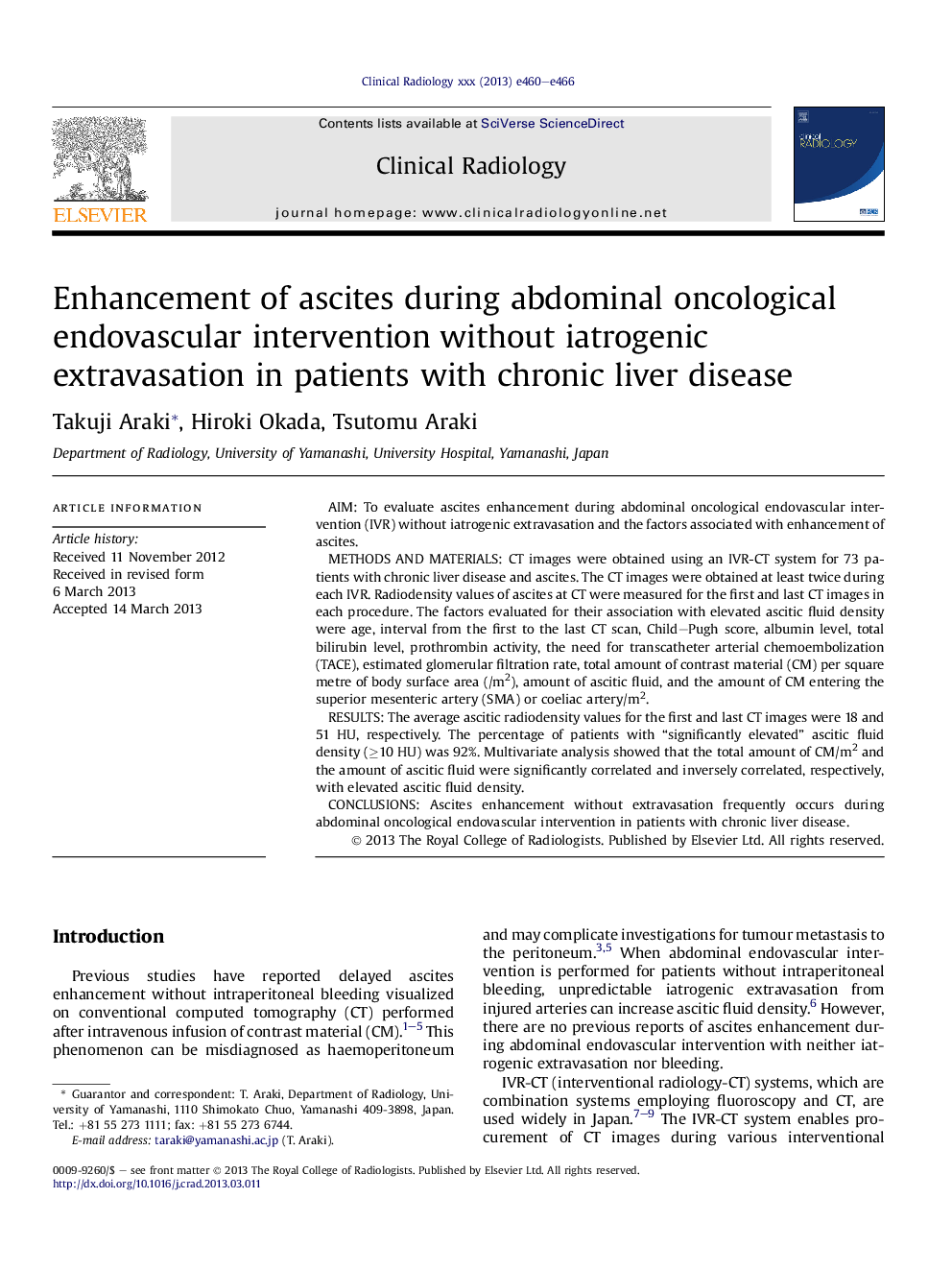| Article ID | Journal | Published Year | Pages | File Type |
|---|---|---|---|---|
| 6190920 | Clinical Radiology | 2013 | 7 Pages |
AimTo evaluate ascites enhancement during abdominal oncological endovascular intervention (IVR) without iatrogenic extravasation and the factors associated with enhancement of ascites.Methods and materialsCT images were obtained using an IVR-CT system for 73 patients with chronic liver disease and ascites. The CT images were obtained at least twice during each IVR. Radiodensity values of ascites at CT were measured for the first and last CT images in each procedure. The factors evaluated for their association with elevated ascitic fluid density were age, interval from the first to the last CT scan, Child-Pugh score, albumin level, total bilirubin level, prothrombin activity, the need for transcatheter arterial chemoembolization (TACE), estimated glomerular filtration rate, total amount of contrast material (CM) per square metre of body surface area (/m2), amount of ascitic fluid, and the amount of CM entering the superior mesenteric artery (SMA) or coeliac artery/m2.ResultsThe average ascitic radiodensity values for the first and last CT images were 18 and 51 HU, respectively. The percentage of patients with “significantly elevated” ascitic fluid density (â¥10 HU) was 92%. Multivariate analysis showed that the total amount of CM/m2 and the amount of ascitic fluid were significantly correlated and inversely correlated, respectively, with elevated ascitic fluid density.ConclusionsAscites enhancement without extravasation frequently occurs during abdominal oncological endovascular intervention in patients with chronic liver disease.
